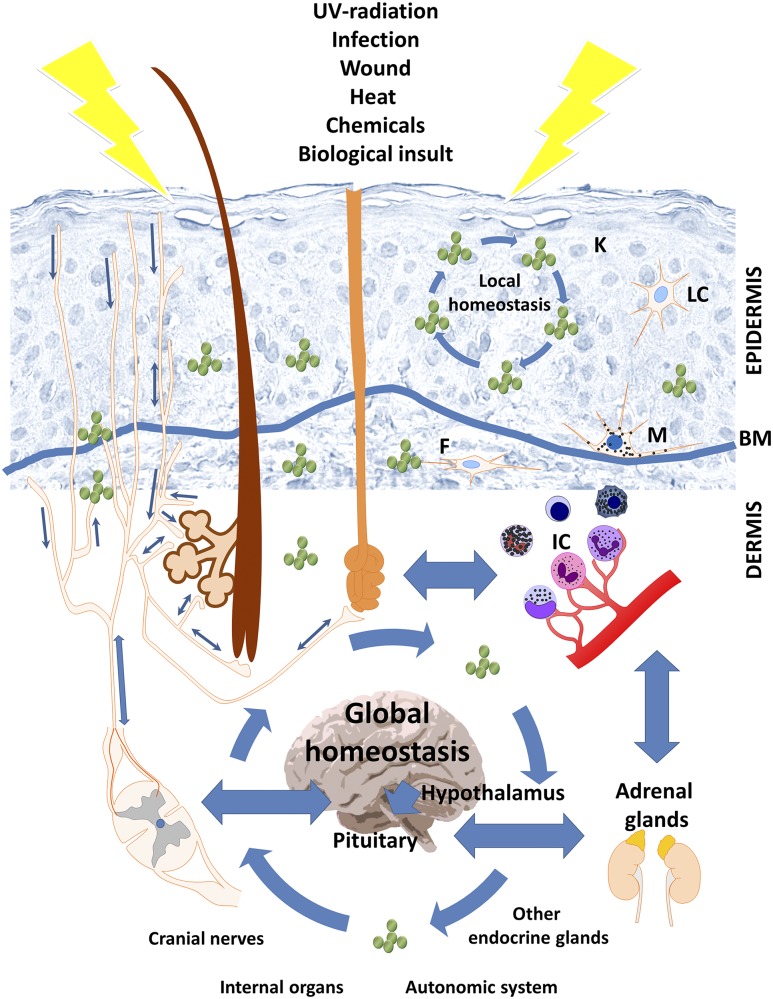Figure 3.
The interaction between the skin’s endocrine system and central neuroendocrine system in stress response. The skin stress response system can activate central neuroendocrine responses with its direct homeostatic, metabolic, and phenotypic consequences. The crosstalk between local and central elements of stress response is maintained by bidirectional neuronal stimulation through naked nerve endings in the epidermis and innervation of adnexal structures (hair follicles; sebaceous, eccrine, and apocrine glands; arrector pili muscle). Active neuroendocrine mediators could also be directly secreted in response to stimuli by neurons, epidermal keratinocytes, melanocytes, and Langerhans cells, as well as dermal residing mast cells, macrophages, and fibroblasts or infiltrating lymphocytes and granulocytes. Furthermore, the circulatory system provides an additional route for an exchange of signaling molecules between the skin’s neuroendocrine system and central endocrine organs, including elements of the HPA axis. Constant exchange of neuroendocrine mediators between skin and other organs is responsible for the maintenance of local and global homeostasis and skin response to external and internal signals. BM, basement membrane; F, fibrocytes/fibroblasts; IC, immune cells; K, keratinocytes; LC, Langerhans cells; M, melanocytes.

